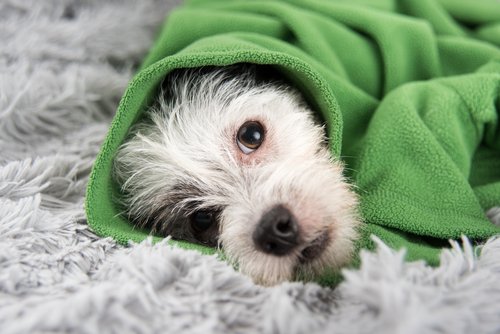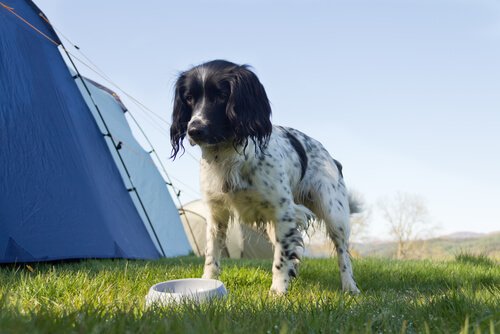What to Do if Your Dog Has an Accident

Accidents, wounds, injuries, and fractures! Even a routine walk through the neighborhood can result into any of these mishaps.
In case of an emergency situation, it’s important to know how to act in order to potentially save your dog’s life. Directly after the accident occurs you should lay the dog down on his left side and immediately cover him with a blanket. If he received a heavy blow, he will need medical attention immediately.

If your dog is unconscious, make sure his neck is straight so air can easily enter his respitory system. Check if his chest is visibly rising and falling. If his breathing is even, take his pulse on the inside of his hind paws. Keep in mind that the normal heart rate for a dog under 13 kilos is between 100 and 160 beats per minute.
Count the number of heartbeats for 15 seconds and multiply that number by 4 in order to figure out his pulse. Do the calculations once more to make sure you got the right number.

The most delicate part is physically moving your dog to the vet’s office or emergency roo m because it can be uncomfortable and painful for him. Keep the blanket around him while you transfer him. If you are driving a car, don’t leave him on the car floor. If you end up needing to slam on the breaks, it could make his injuries even worse.
Injuries, hemorrhages, fractures…your dog after an accident
- In case your dog is hemorrhaging, you have to immediately stop the blood flow. To do this, you’ll have to apply a compress (made of cloth – cotton leaves traces of fibers) that’s been soaked in water. Once you’ve stopped the hemorrhage, cut the hair around the area so it can be cleaned because it enables the wound to heal faster, then immediately go to the vet.
- If the wound is from a bite, then clean the infected area in addition to cutting the hair. Use lukewarm water and a disinfectant for sensitive skin. Afterwards, apply antiseptic cream. If the wound is deep, immediately get him to the vet.
- If your dog has a fracture, be very careful when handling your dog, avoid making any abrupt movements. You can try to immobilize the fracture only if you experience in first aid by using a tie, magazine, piece of string, etc. If you don’t know what to do next, it’s best not to move the affected body part to further prevent injuring your dog.
- Drowning: If the animal has symptoms of asphyxiation or drowning after falling in the water, the best way to get him out is lifting him up by his back paws so the liquid can escape his lungs through his mouth.
If it looks like he’s not breathing, try to preform CPR by pressing rhythmically on both sides of his thorax. One trick is covering his mouth with one hand and using the other to hold a tube up to his nostrils and blow air in his mouth.
The possibility of poisoning
Accidental intoxication and poisoning are other serious risks that a dog can run into during his day-to-day activities. The signs of poisoning are obvious: vomiting, dizziness, convulsions, etc. Your pet may even begin to foam from the mouth.

In such situations, the first step is to identify the poisonous substance and putting it in a jar to bring to the vet. In the meantime, keep giving your dog water or milk to try and dilute the poison.
If the toxin has made contact with the dog’s skin, wash him with plenty of water so that if he licks himself he doesn’t ingest more of the poison. If necessary, you can even cut the fur from the affected zone, as mentioned earlier.
Eye emergencies
During a walk, there are a lot of dangers your dog might run into. Grains of sand, parts of tree branches, and one of these objects could end up getting caught in his eyes. If there’s an injury on the eyeball and the lid is swollen shut, don’t try to force it open.
The first-aid kit
Always keep a full first aid kit for looking after your pet – you’ll need gloves, scissors, iodine, bandages, thermometers, cotton, oxygenated water, alcohol, gauze, surgical tape, etc.
